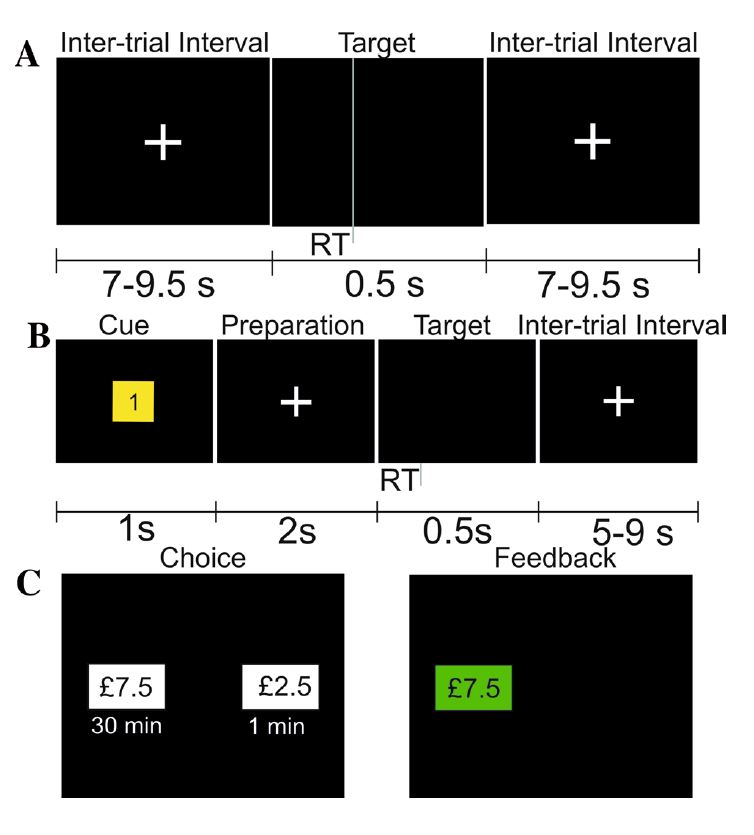11 de junio 2020
Abstract:
We explored how reward and value of effort shapes performance in a sustained vigilance, reaction time (RT) task. It was posited that reward and value would hasten RTs and increase cognitive effort by boosting activation in the sensorimotor cortex and inhibition in the frontal cortex, similar to the horse-race model of motor actions. Participants performed a series of speeded responses while expecting differing monetary rewards (0 pence (p), 1 p, and 10 p) if they responded faster than their median RT. Amplitudes of cortical alpha, beta, and theta oscillations were analysed using the event-related desynchronization method. In experiment 1 (N = 29, with 12 females), reward was consistent within block, while in experiment 2 (N = 17, with 12 females), reward amount was displayed before each trial. Each experiment evaluated the baseline amplitude of cortical oscillations differently. The value of effort was evaluated using a cognitive effort discounting task (COGED). In both experiments, RTs decreased significantly with higher rewards. Reward level sharpened the increased amplitudes of beta oscillations during fast responses in experiment 1. In experiment 2, reward decreased the amplitudes of beta oscillations in the ipsilateral sensorimotor cortex. Individual effort values did not significantly correlate with oscillatory changes in either experiment. Results suggest that reward level and response speed interacted with the task- and baseline-dependent patterns of cortical inhibition in the frontal cortex and with activation in the sensorimotor cortex during the period of motor preparation in a sustained vigilance task. However, neither the shortening of RT with increasing reward nor the value of effort correlated with oscillatory changes. This implies that amplitudes of cortical oscillations may shape upcoming motor responses but do not translate higher-order motivational factors into motor performance.


